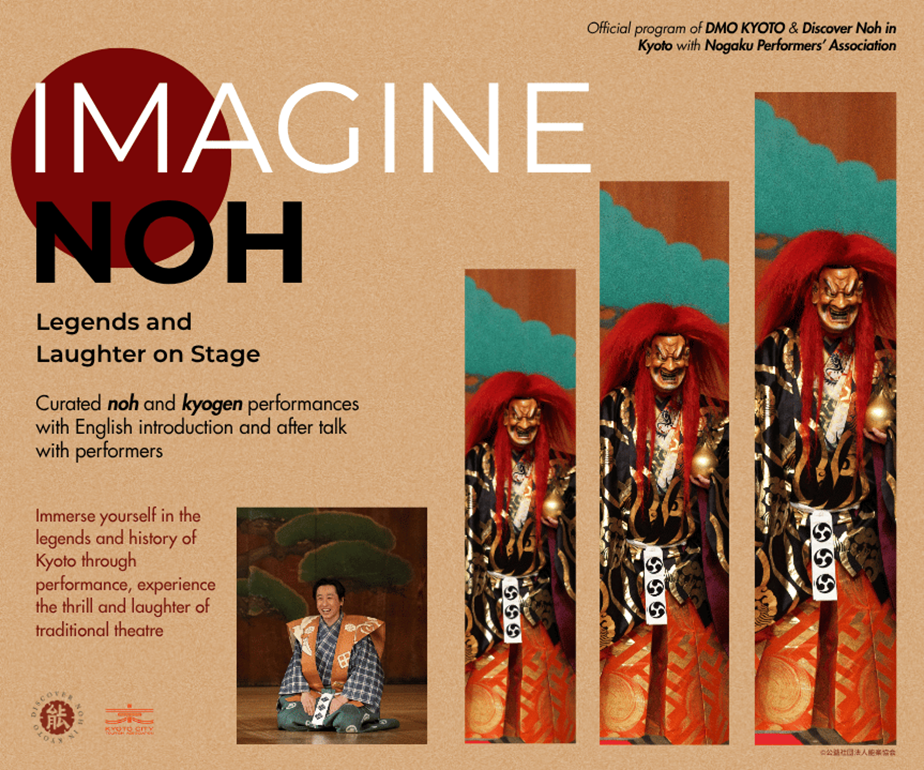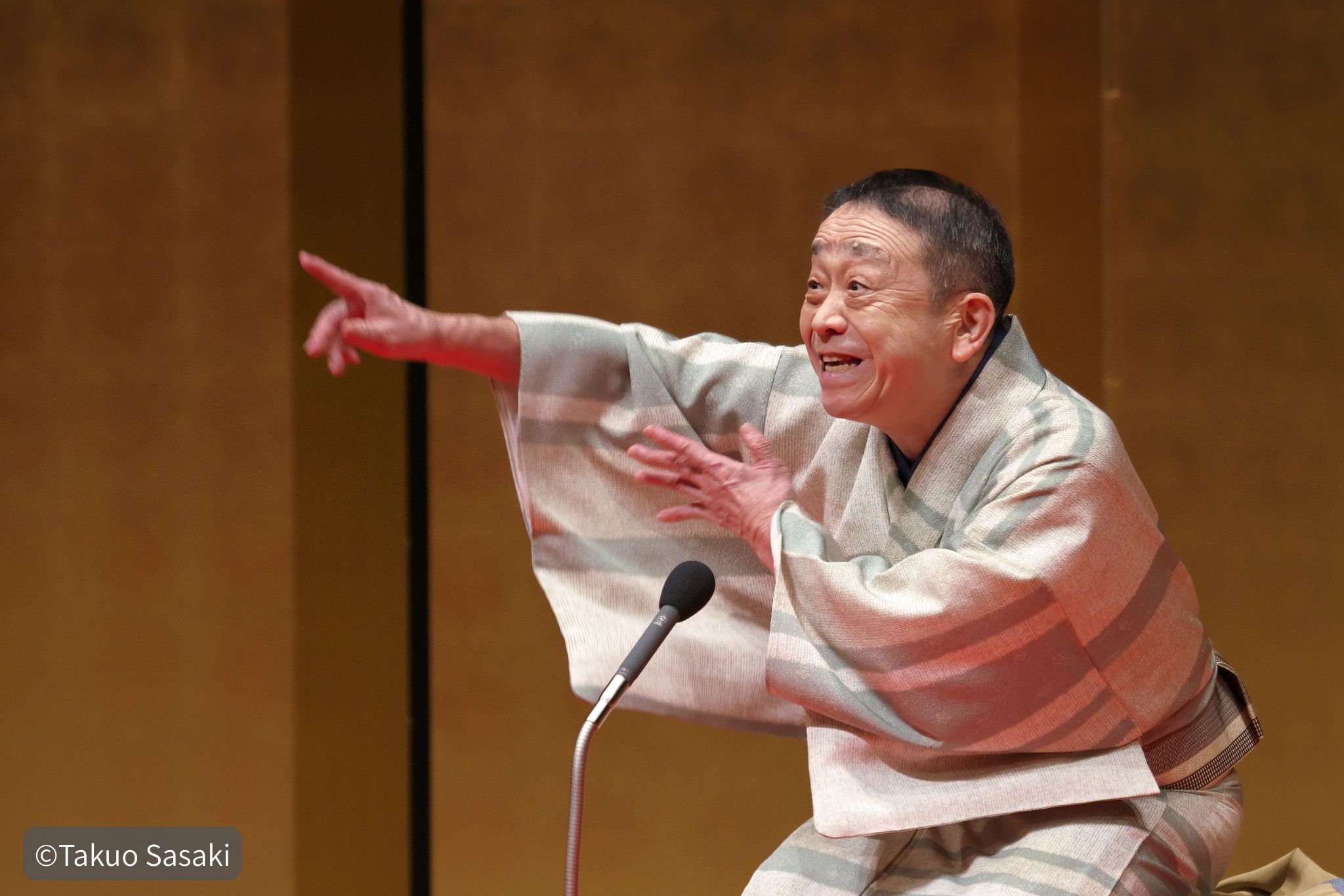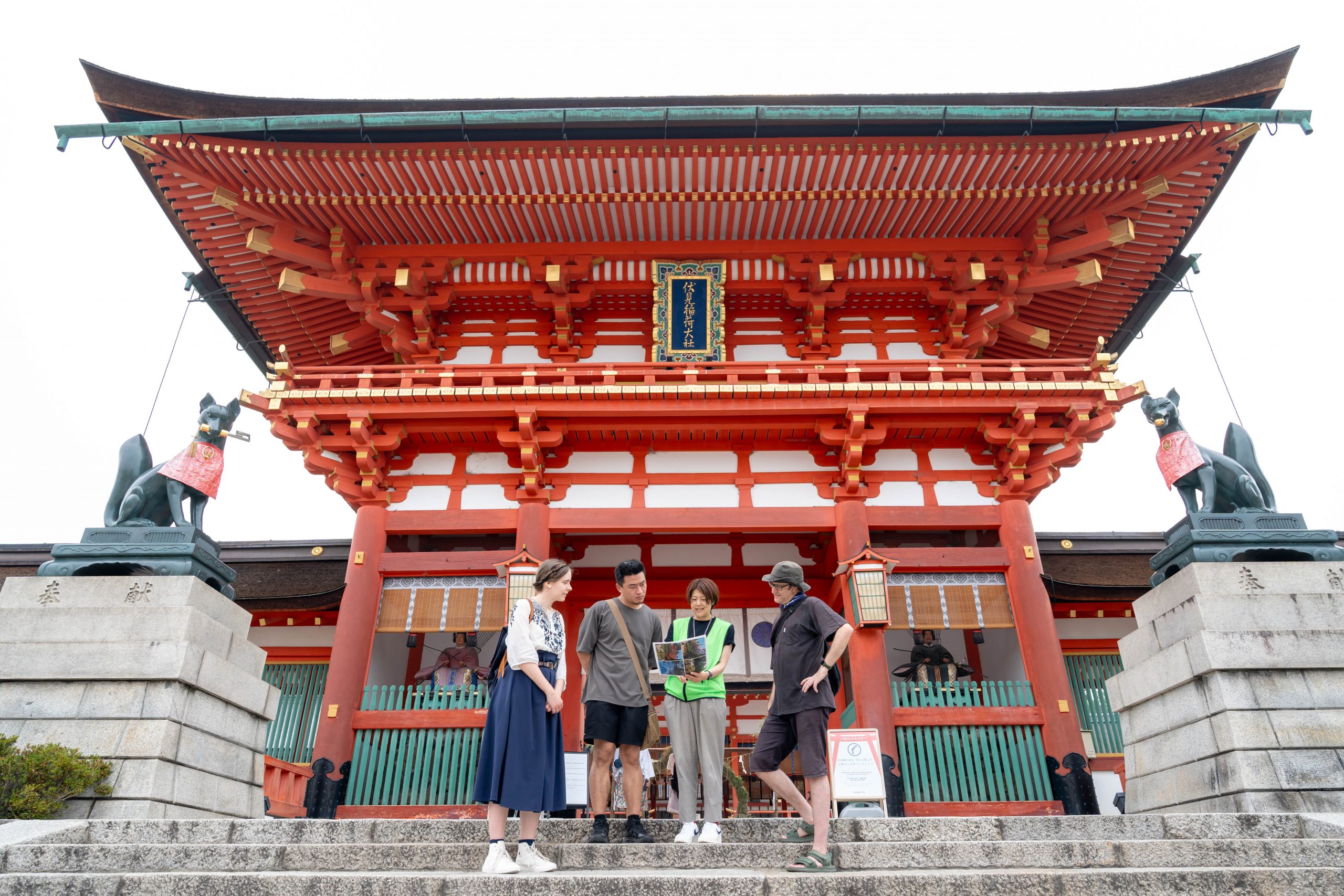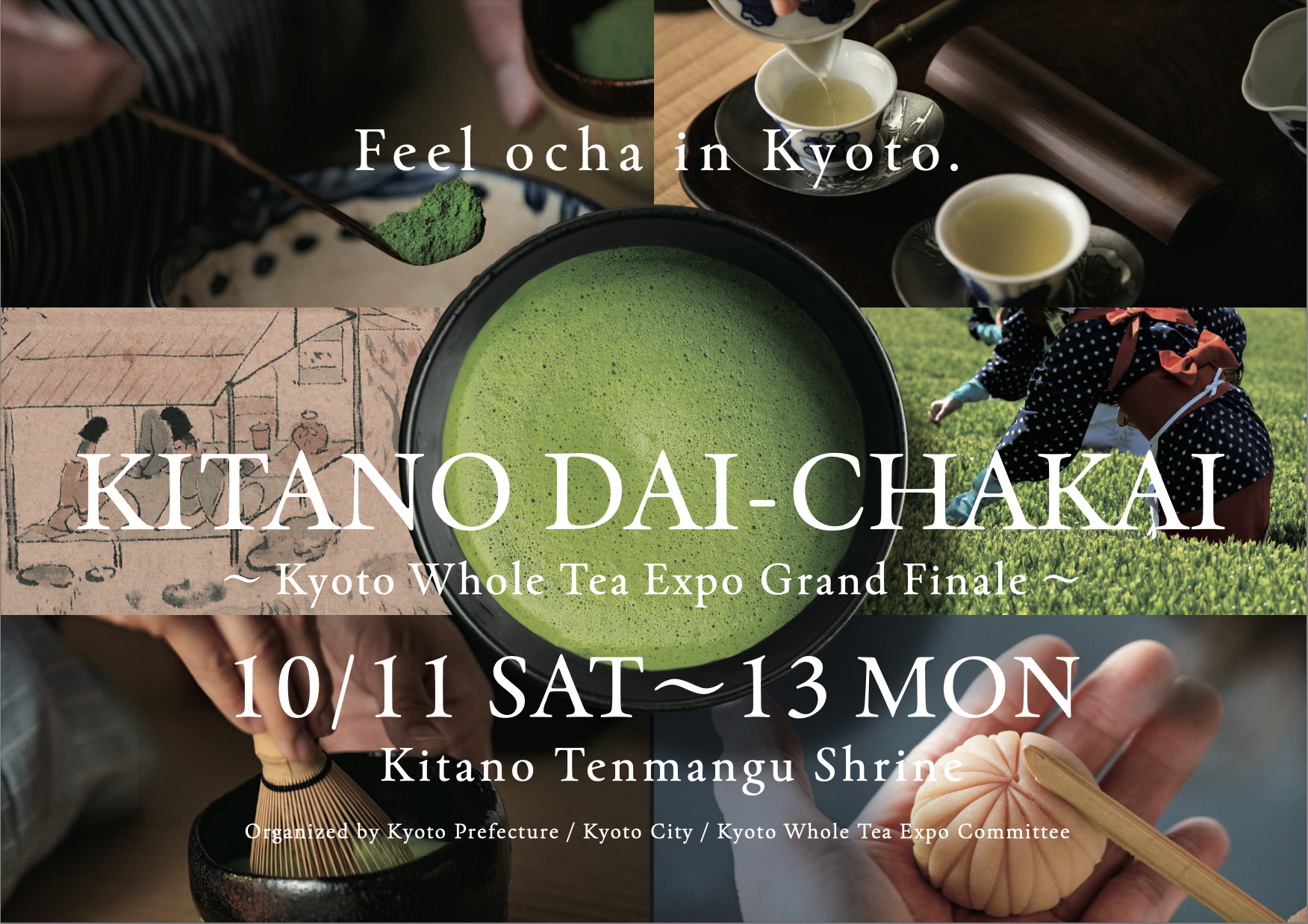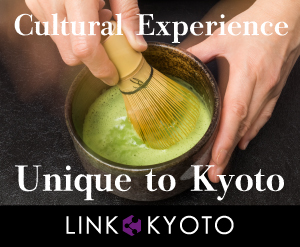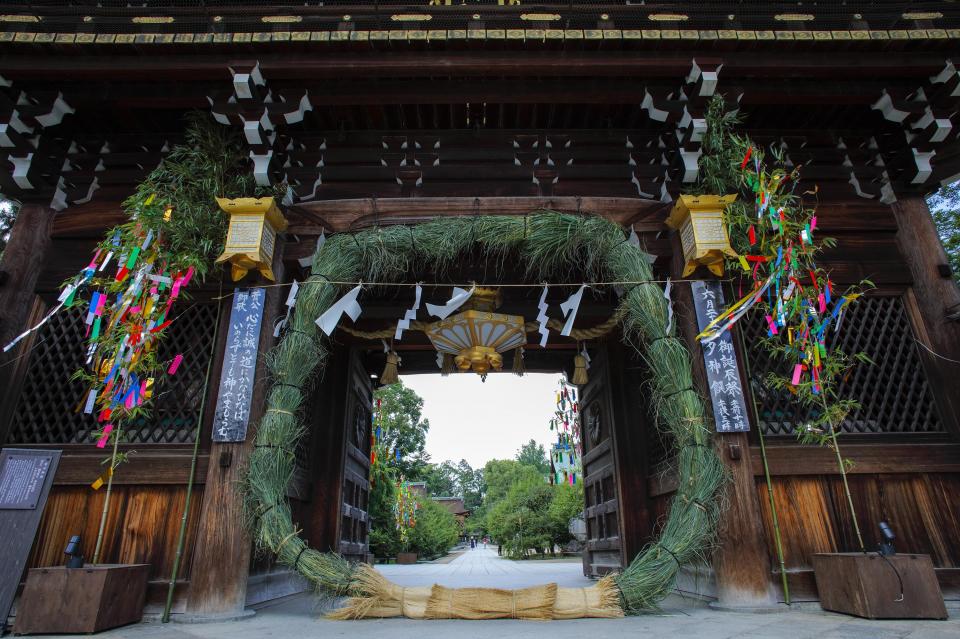
The summer purification rites are a Shinto ritual meant to drive away the bad luck accumulated within oneself throughout the past half a year and pray for health and safety during the remaining six months.
Because they are supposed to be performed in the middle of the year, the Nagoshi no Harae takes place throughout June and usually culminates on June 30th. A woven grass ring (chinowa in japanese), larger than a person’s height, is set up at the shrine gates, and the worshippers walk through it to ward off evil spirits. This ritual is derived from the legend about the god called Susanoo-no-Mikoto, who sought a shelter during his journeys and was welcomed warmly by another god names Somishorai despite his poverty. Susanoo is said to have later escaped the plague by wearing a woven grass ring around his waist. Aside from walking through the ring, there is also a custom of transferring your accumulated impurities onto paper dolls after passing through the woven grass ring and throwing them into the river to ward off bad luck.
Although the woven grass rings are often placed around the same date and time, the timing can vary depending on the shrine, so please check each location for details in advance.
Passing through the woven grass ring and the ‘rule of eight’

Each shrine has its own rules for crossing the woven grass ring. Generally, while chanting a Shinto song, step over the ring with your left foot, go through it and then circle back to the front after turning left. Then, from the right foot, go through the ring and circle back to the front, this time turning to the right side. Repeat the first step; step through the ring with your left foot and return to the front after turning to the left. Now you can step through the woven grass ring with your left foot and proceed further to the main shrine to pray, bringing the ritual to a total of eight moves (left, right, left). Some shrines might ask you to sprinkle kirinusa (hemp and paper cut into small pieces) on your body to purify yourself before entering the shrine.
Transferring the impurities to the hitogata doll
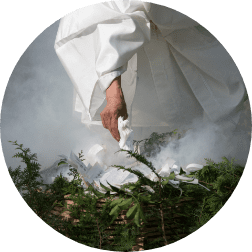
A hitogata is a paper doll in the shape of a person. During the Nagoshi no Harae festival, worshippers write their names and ages on these dolls, rub them or blow on them to transfer their impurities to the doll. There is also a custom of transferring the bad luck to the doll by rubbing the parts of the body that are ill or injured. After passing through the woven grass ring, the dolls are placed in the shrine as a substitute for the visitor’s impurities, floated down a river and burnt in a fire. The details of the process differ from shrine to shrine, but it is one of the ways that people drive away their bad luck and pray for good fortune throughout the year.
The ritual schedule for different shrines
Kurumazaki Shrine
The shrine visitors can pass through the woven grass ring displayed on the torii gate at the entrance to the main hall throughout the month of June.
During the Great Purification Ceremony, the priest burns the dolls placed inside the shrine as part of the purification ritual.

Kurumazaki Shrine official website (available in Japanese only)
Kitano Tenmangu Shrine
The woven grass ring is set up in front of the main hall. Additionally, a Shinto ritual for Sugawara no Michizane’s (the head deity of the shrine) birthday is performed (not open to the public) on the shrine. Later on, a large woven grass ring is set up at the tower gate.
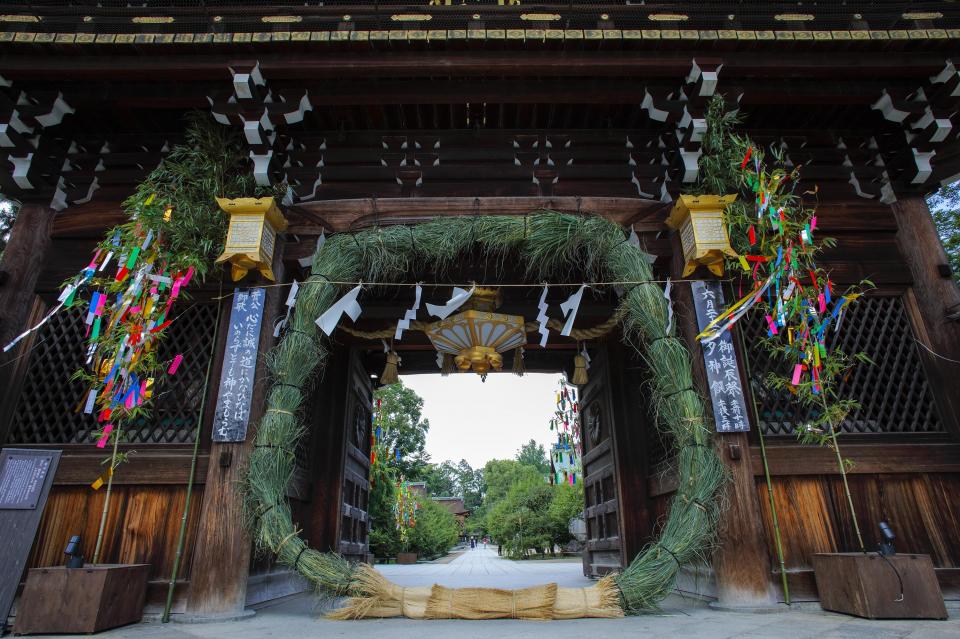
A new woven grass ring is set up in front of the main hall during the Great Purification Ceremony. Participants pass through the ring together with the priest to be cleansed of their impurities and pray for good health.
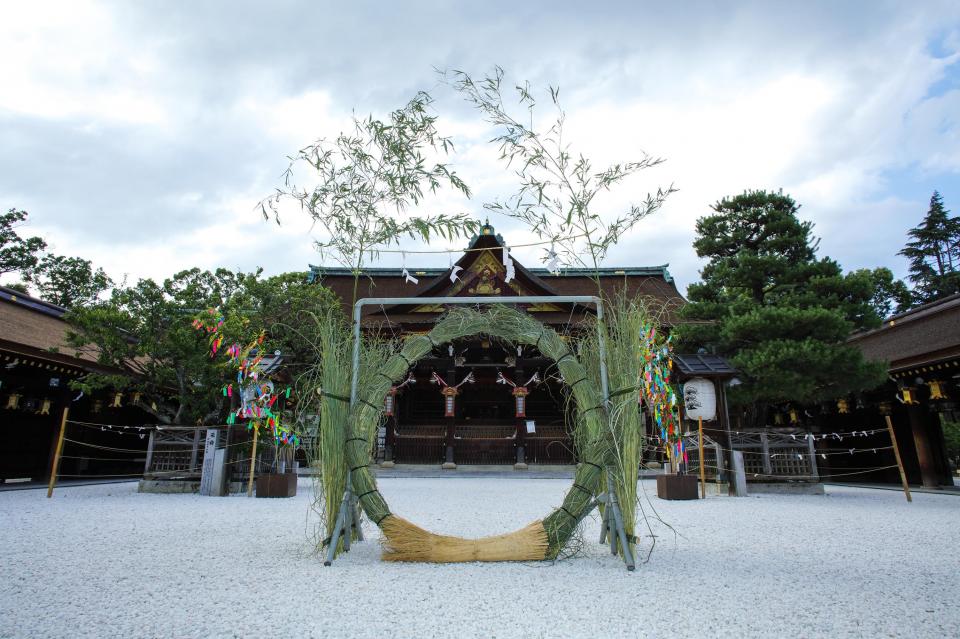
More on Kitano Tenmangu Shrine
Kitano Tenmangu Shrine official website
Yasui Konpira Shrine
Hitogata dolls are given out to worshippers. By rubbing the doll after writing their name on it and blowing on it three times, they can transfer their own impurities onto it.
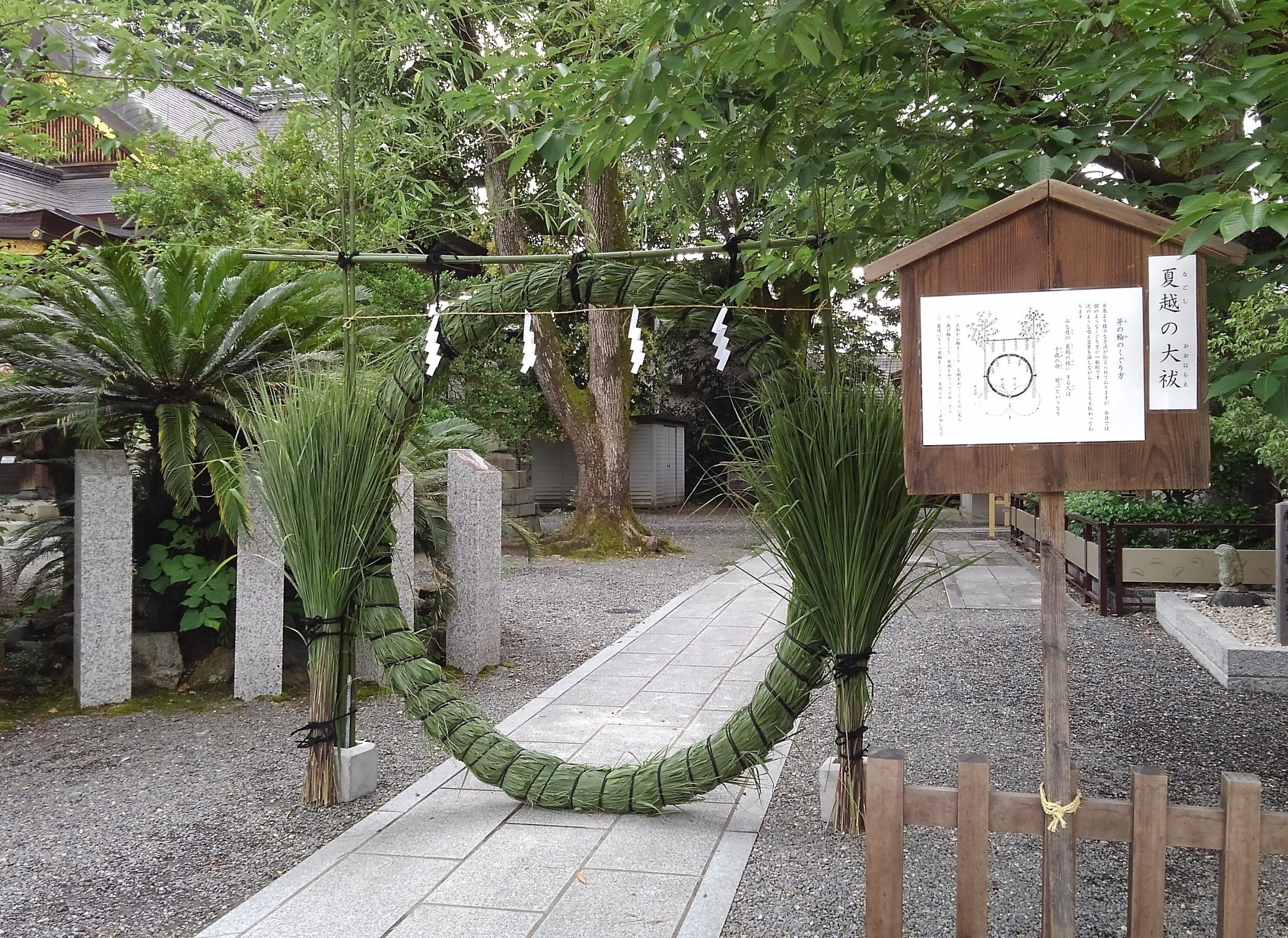
Yasui Konpira Shrine official website
Shimogoryo Shrine
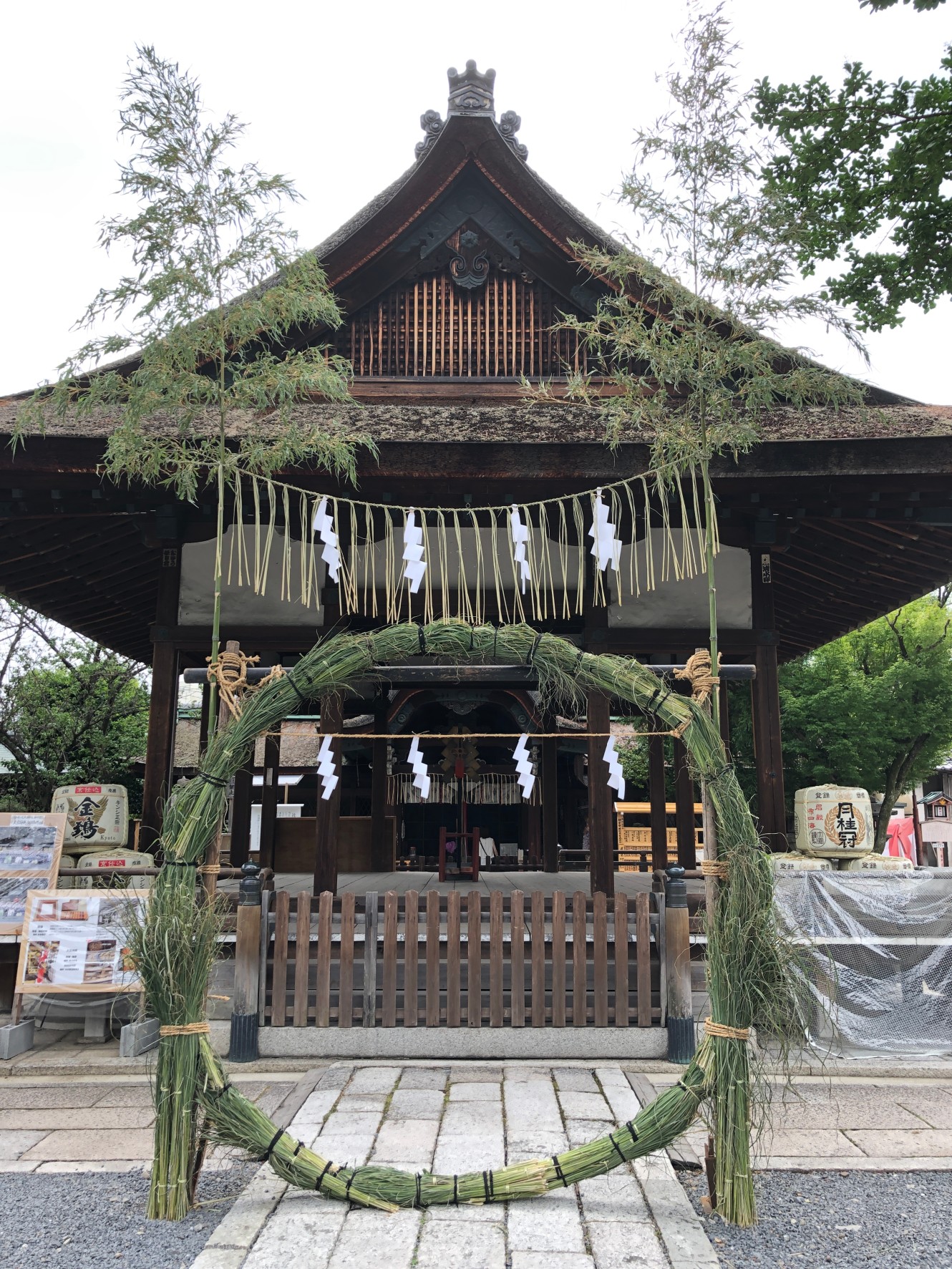
Shimogoryo Shrine official website (available in Japanese only)
Jonangu Shrine
The woven grass ring is available for visitors to pass through, and the hitogata doll that carries people’s impurities is released into the Misogi-no-Ogawa stream.
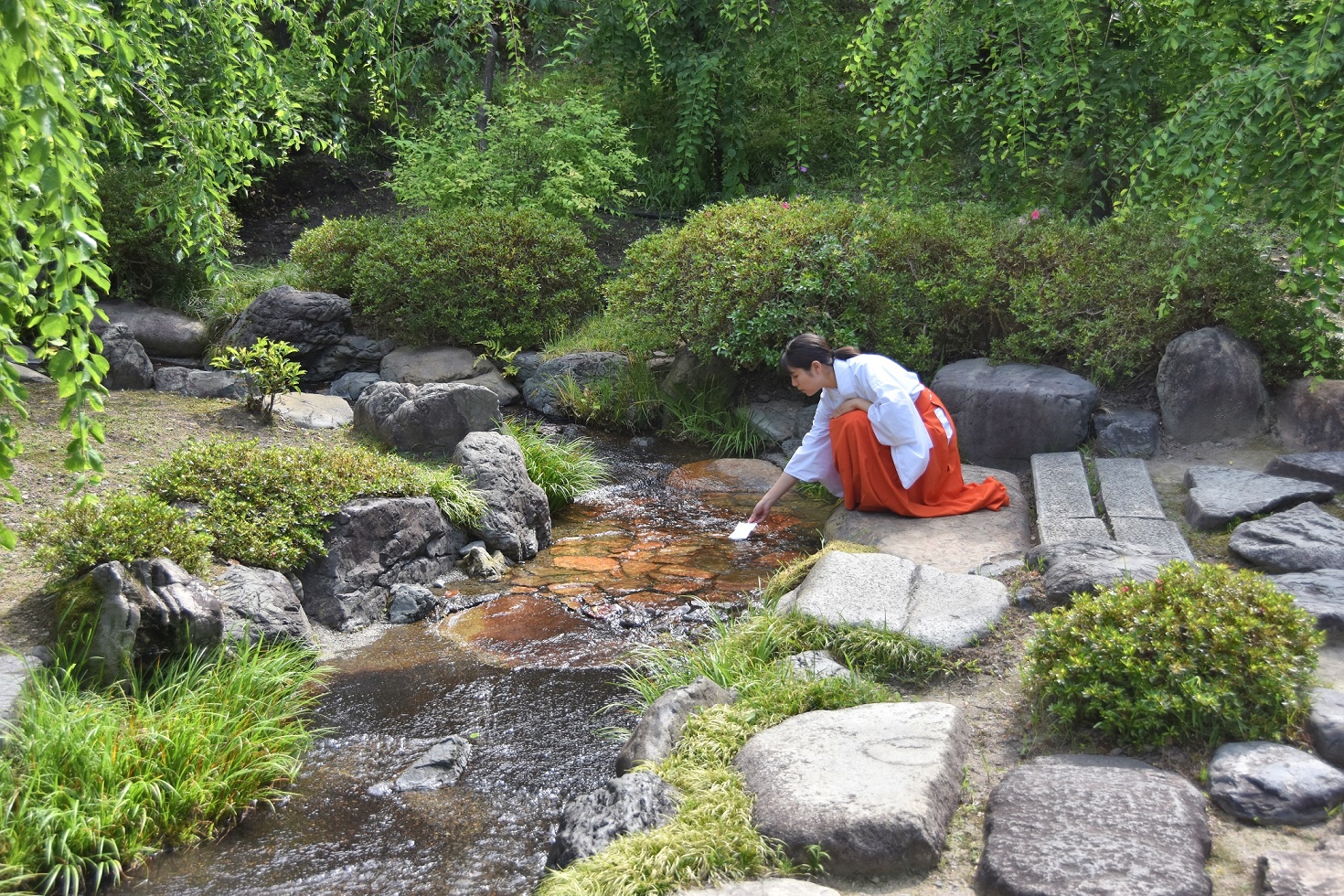
A Kagura dance for the purification ceremony is performed as part of the rites.
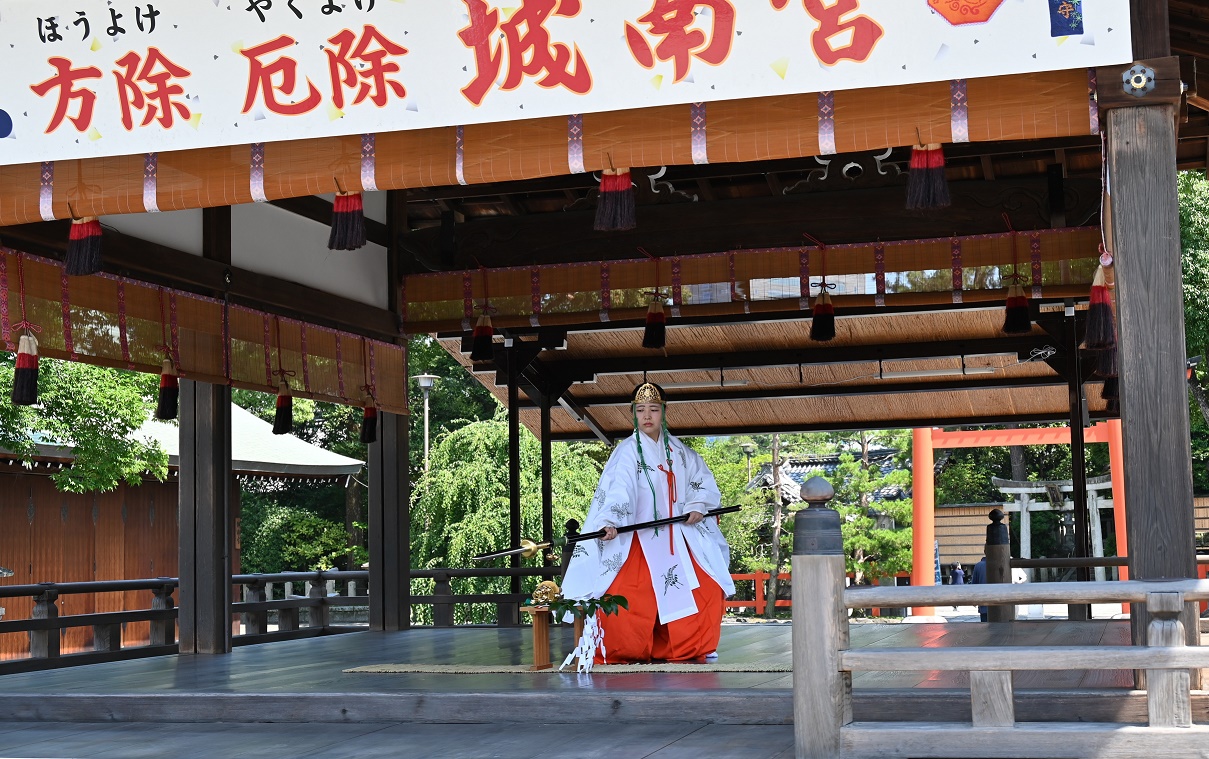
This shrine additionally sets up a large woven grass ring (5 meters in diameter) in the parking lot. After being purified by the priest, it is possible to pass through the ring in your car or on a motorcycle, which is a rare event, even across Japan.
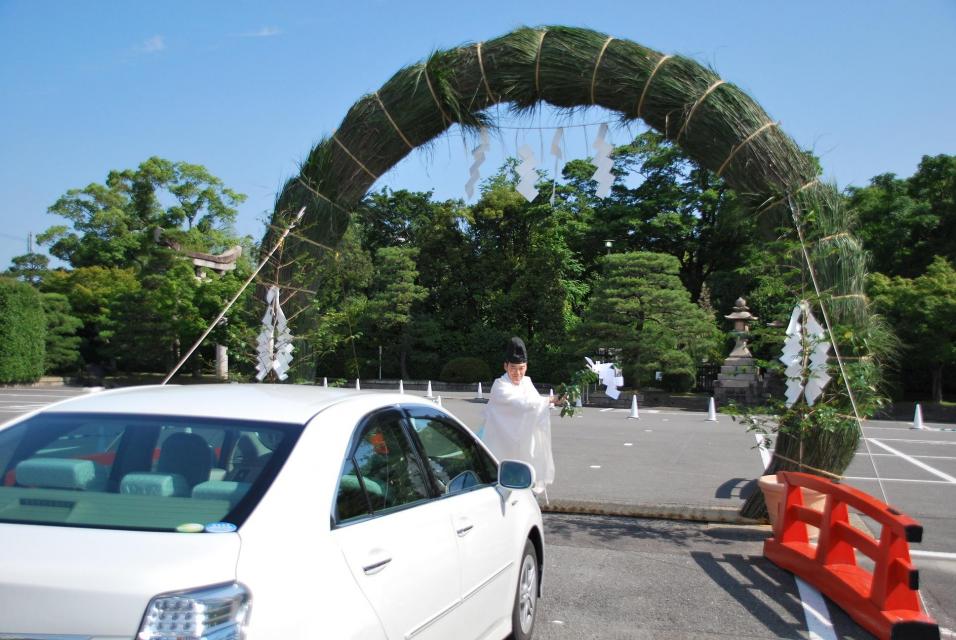
Jonangu Shrine official website
Iwaya Jinja Shrine
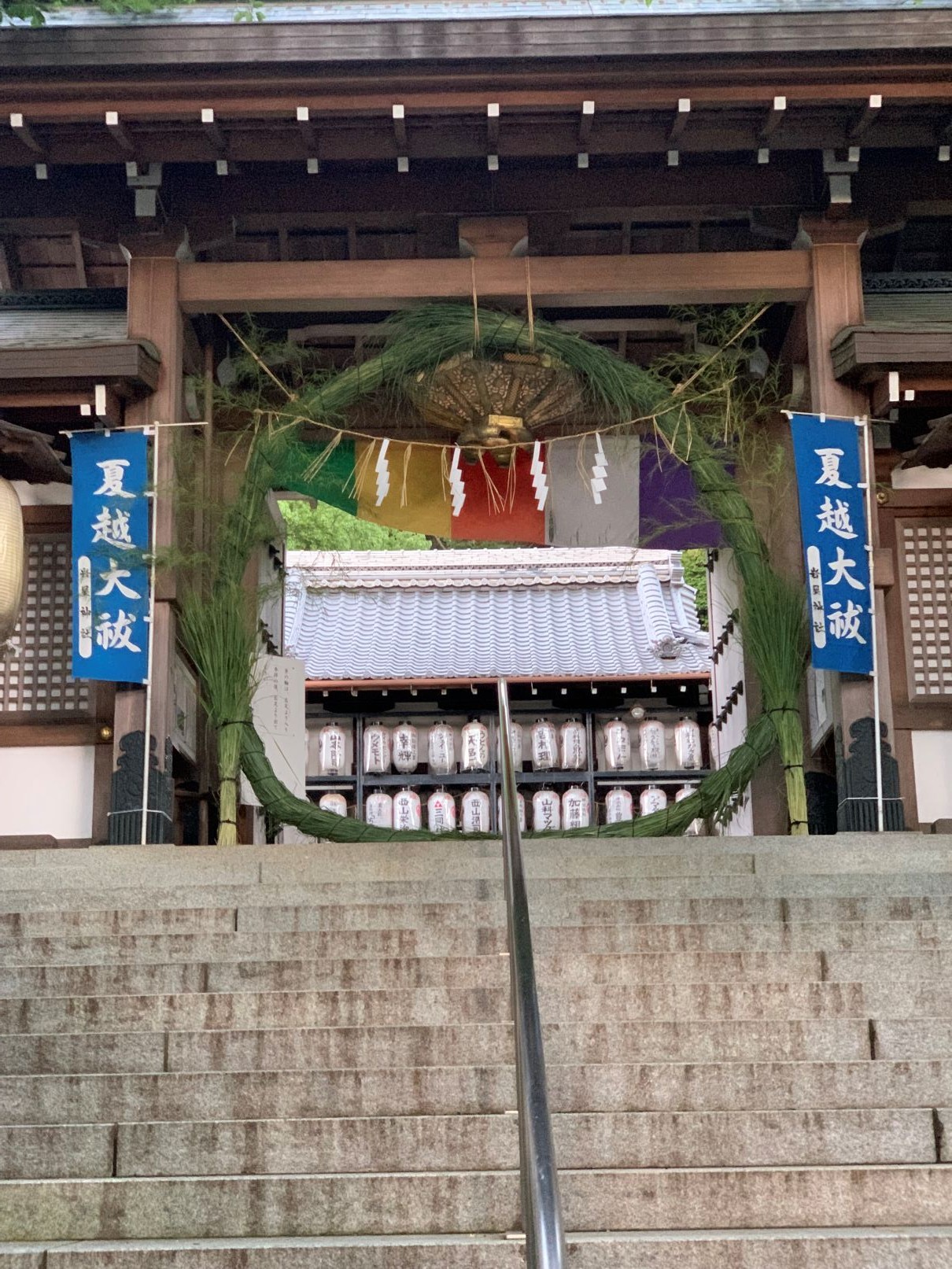
Iwaya Jinja Shrine official website (available in Japanese only)
Awata Shrine
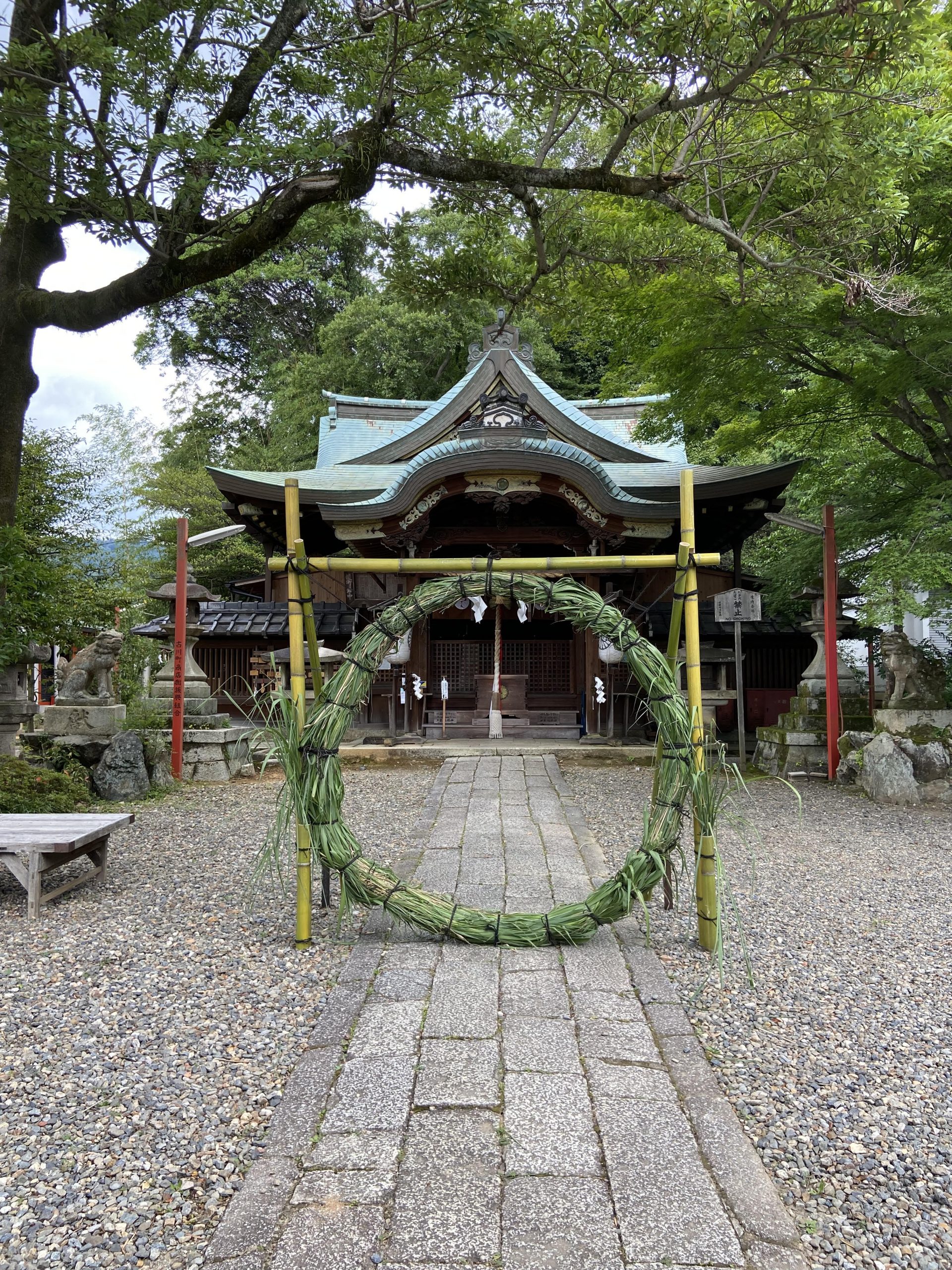
Awata Shrine official website (available in Japanese only)
Oharano Shrine
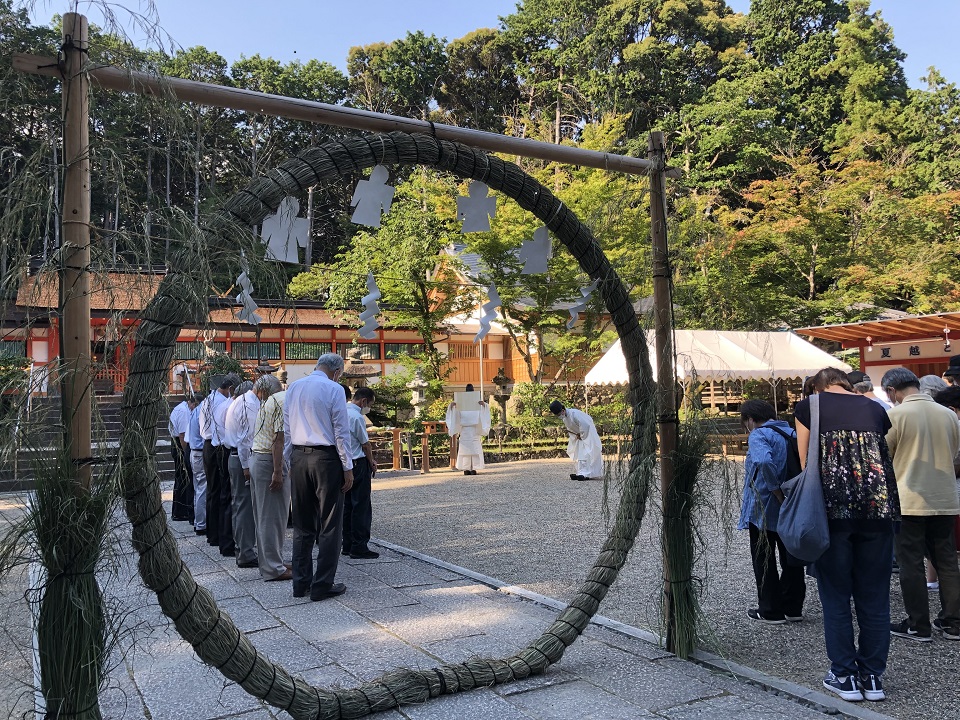
Oharano Shrine official website (available in Japanese only)
Yoshida Shrine
The woven grass ring is available for visitors to pass through and the Great Purification Ceremony is performed at the last day of the rituals. The hitogata doll that has taken on the visitor’s impurities is burned, and then a ceremony where worshippers pass through the woven grass ring three times while chanting a Shinto song is held.
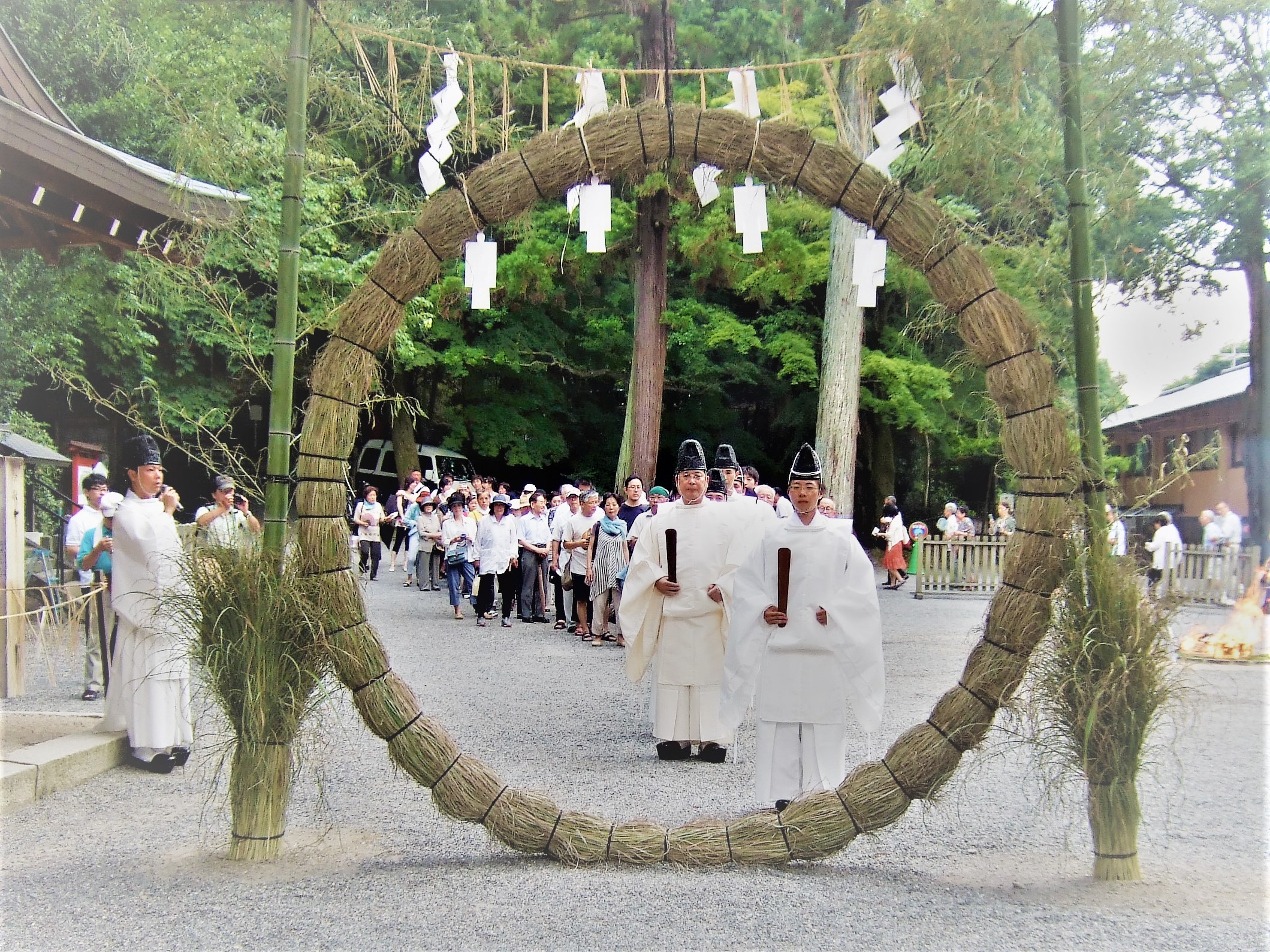
Yoshida Shrine official website (available in Japanese only)
Heian Jingu Shrine
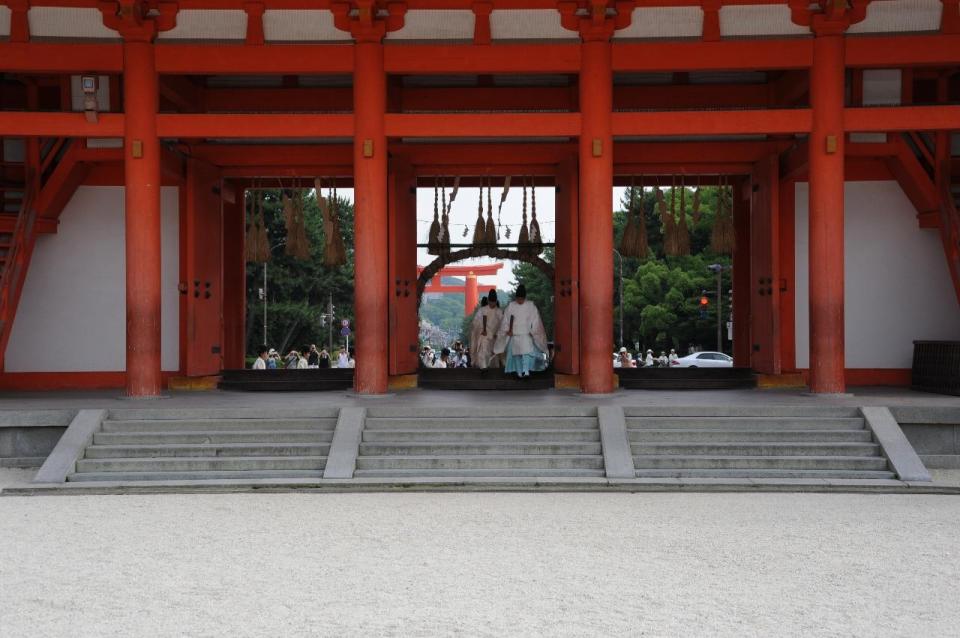
Heian Jingu Shrine official website
Shiramine Jingu Shrine
The woven grass ring is available for visitors to pass through and the Great Purification Ceremony is performed at the last day. The participants of the ritual sing the Oharae no Kotoba (Great Purification Prayer) in unison. The hitogata dolls are purified with kirimasa (cut hemp) and placed in a karahitsu (wooden box). Afterwards, another ritual begins, and the participants pass through the woven grass ring three times while bowing in front of the main shrine building.
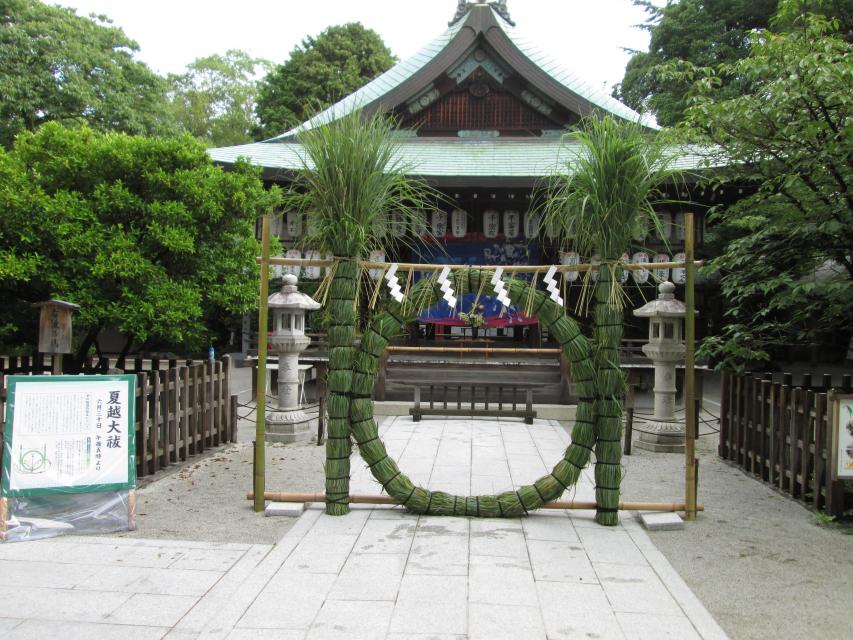
Shiramine Jingu Shrine official website
Fushimi Inari Taisha
After the Great Purification Ceremony, the chief priest, priests and all attendees pass through the woven grass ring.
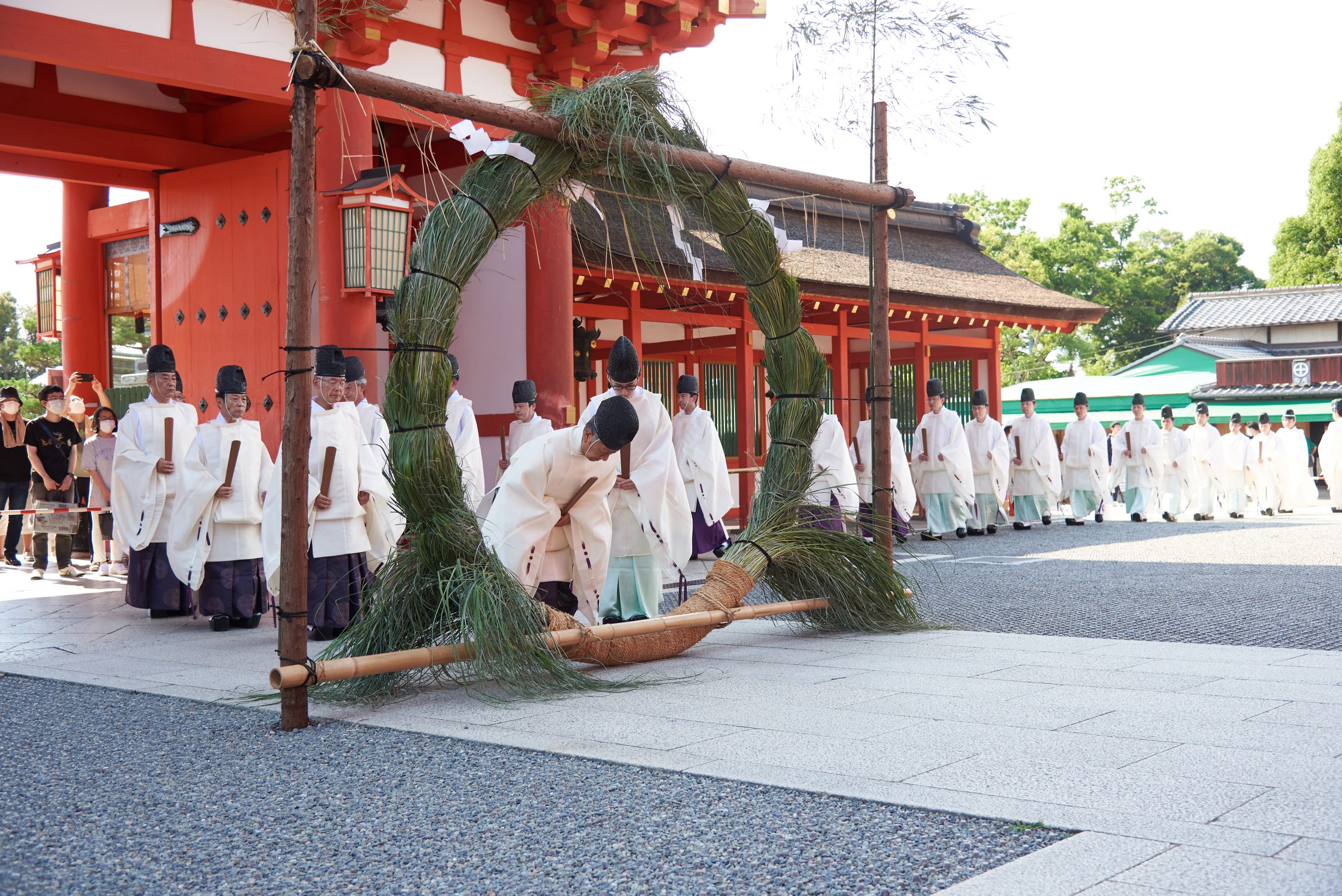
More on Fushimi Inari Taisha Shrine
Fushimi Inari Taisha official website
Fujimori Shrine
The woven grass ring is available for visitors to pass through and the Great Purification Ceremony is performed at the last day of the rituals.
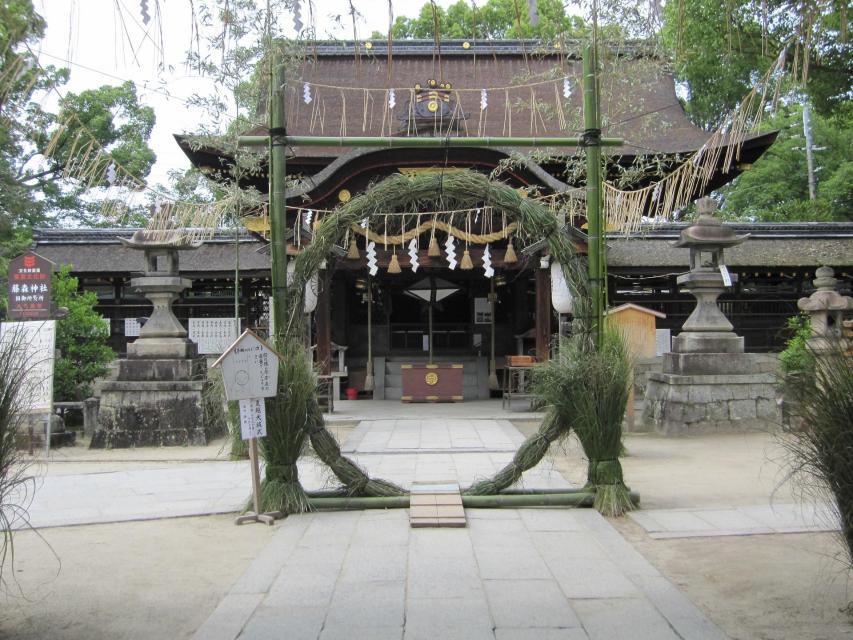
Fujimori Shrine official website (available in Japanese only)
Kamigamo Jinja Shrine
The Nagoshi no Harae ritual begins when the priest passes through the woven grass ring set up in front of the tatesuna (carefully formed sand cones made in the image of sacred mountains) at the shrine grounds. After the priest has passed through, worshippers can do so as well. At the Great Purification Ceremony, a ceremony of “doll floating” begins, where the hitogata dolls representing one’s sins and impurities are floated down the Nara-no-Ogawa stream.
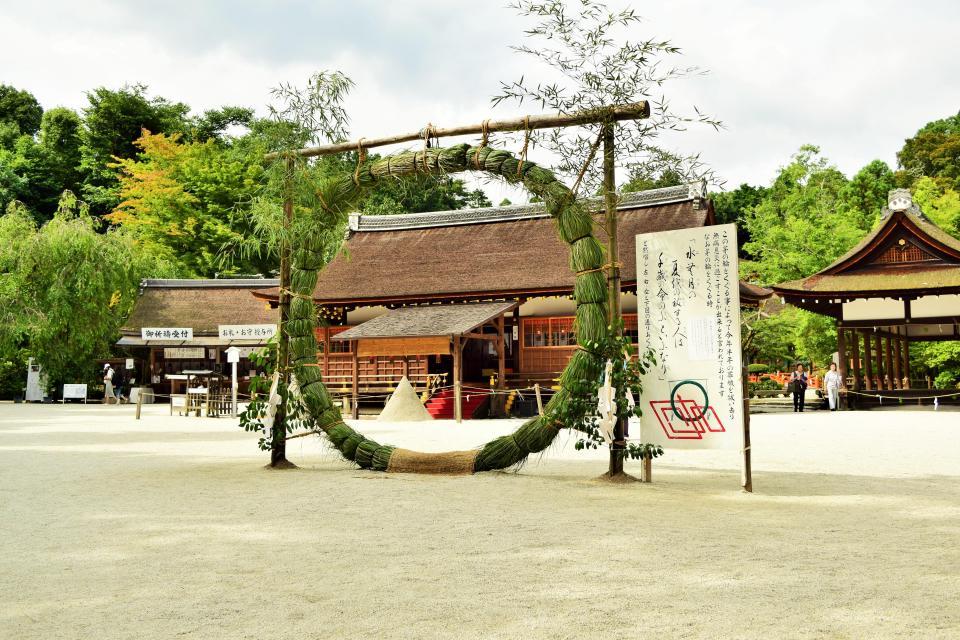
Kamigamo Jinja Shrine official website
Imamiya Shrine
During the Great Purification Ceremony, the shrine’s visitors pass through the woven grass ring while chanting “Those who purify themselves over the summer during the Minazuki Great Purification Ceremony will prolong their lives for a thousand years”. The hitogata doll is burned in a fire, and the impurities that have build up over the past six months are purified.

Imamiya Shrine official website
Daishogun Hachijinja Shrine
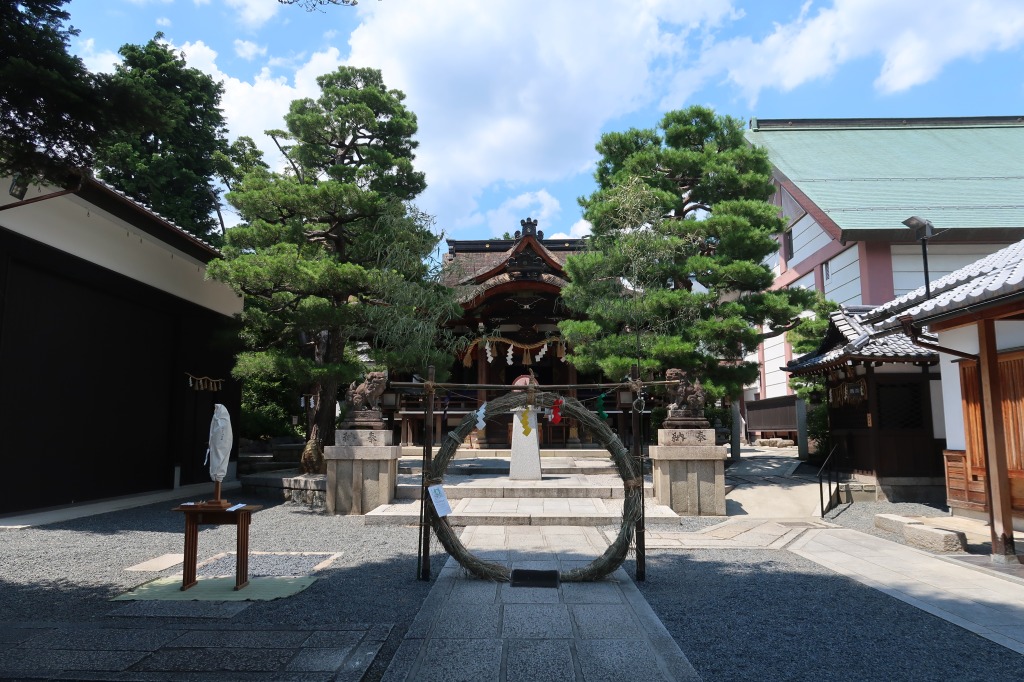
Daishogun Hachijinja Shrine official website
Hirano Shrine
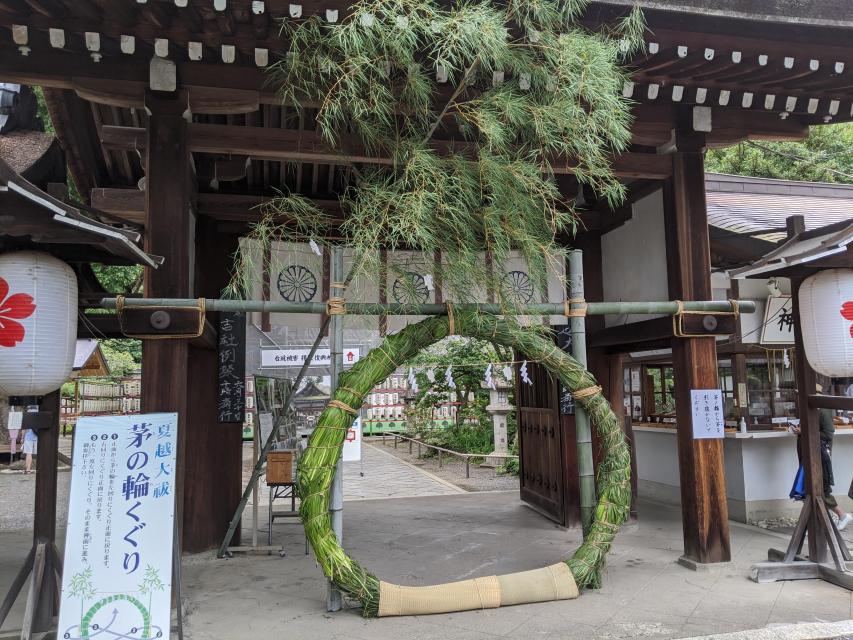
Hirano shrine official website
Manzoku Inari Shrine
After the Great Purification Ceremony is over, visitors line up and pass through the woven grass ring. Pets such as dogs and cats can also participate in the ritual. In addition to human-shaped hitogata dolls that dissolve in water, there are also animal-shaped dolls that serve the same function for pets.
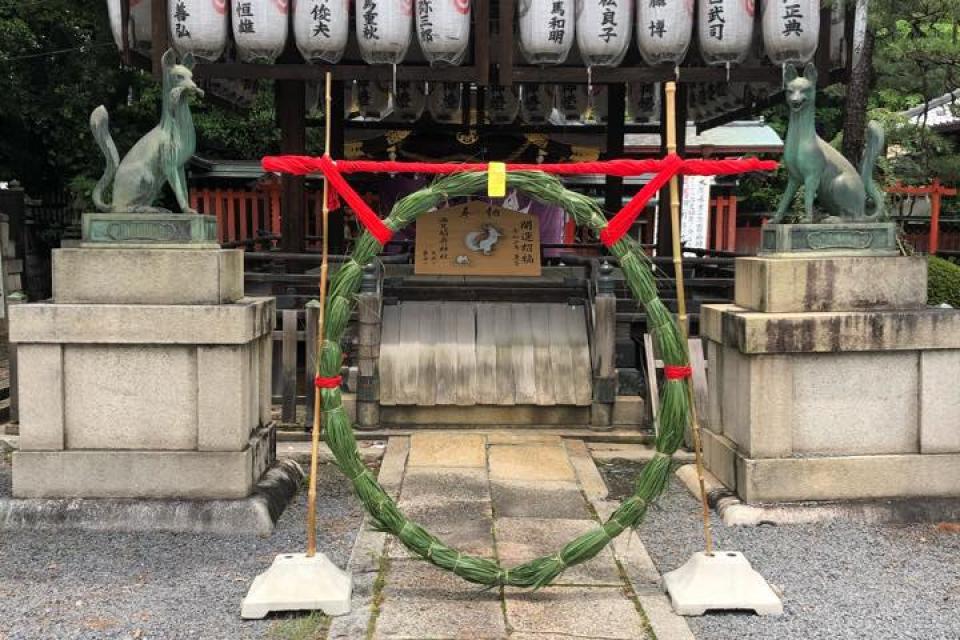
Manzoku Inari Shrine official website (available in Japanese only)
Kenkun Shrine
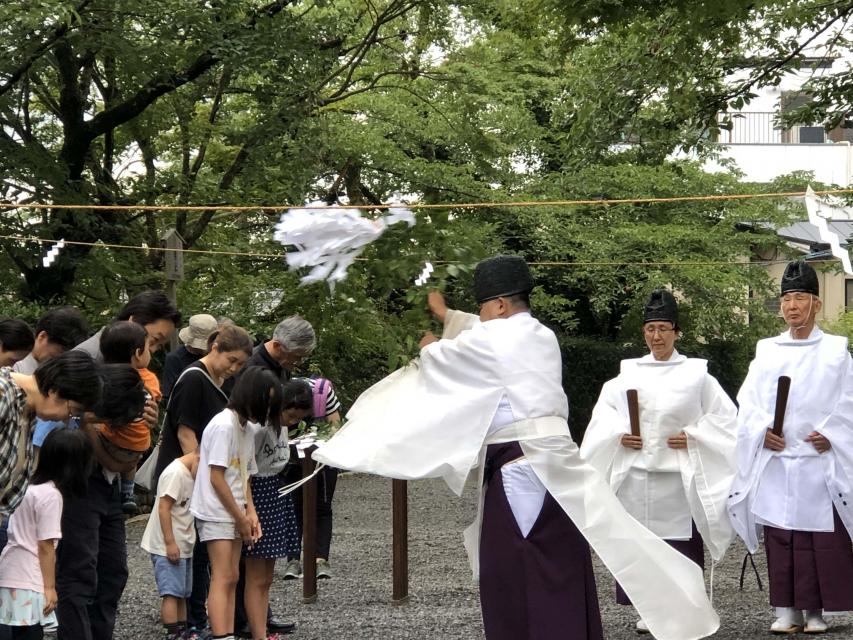
Kenkun Shrine official website
Okazaki Shrine
Every year a woven grass ring is set up in order to take away the impurities of the last six months. A Shinto ritual is held, but only those involved with the shrine are allowed inside the main hall.
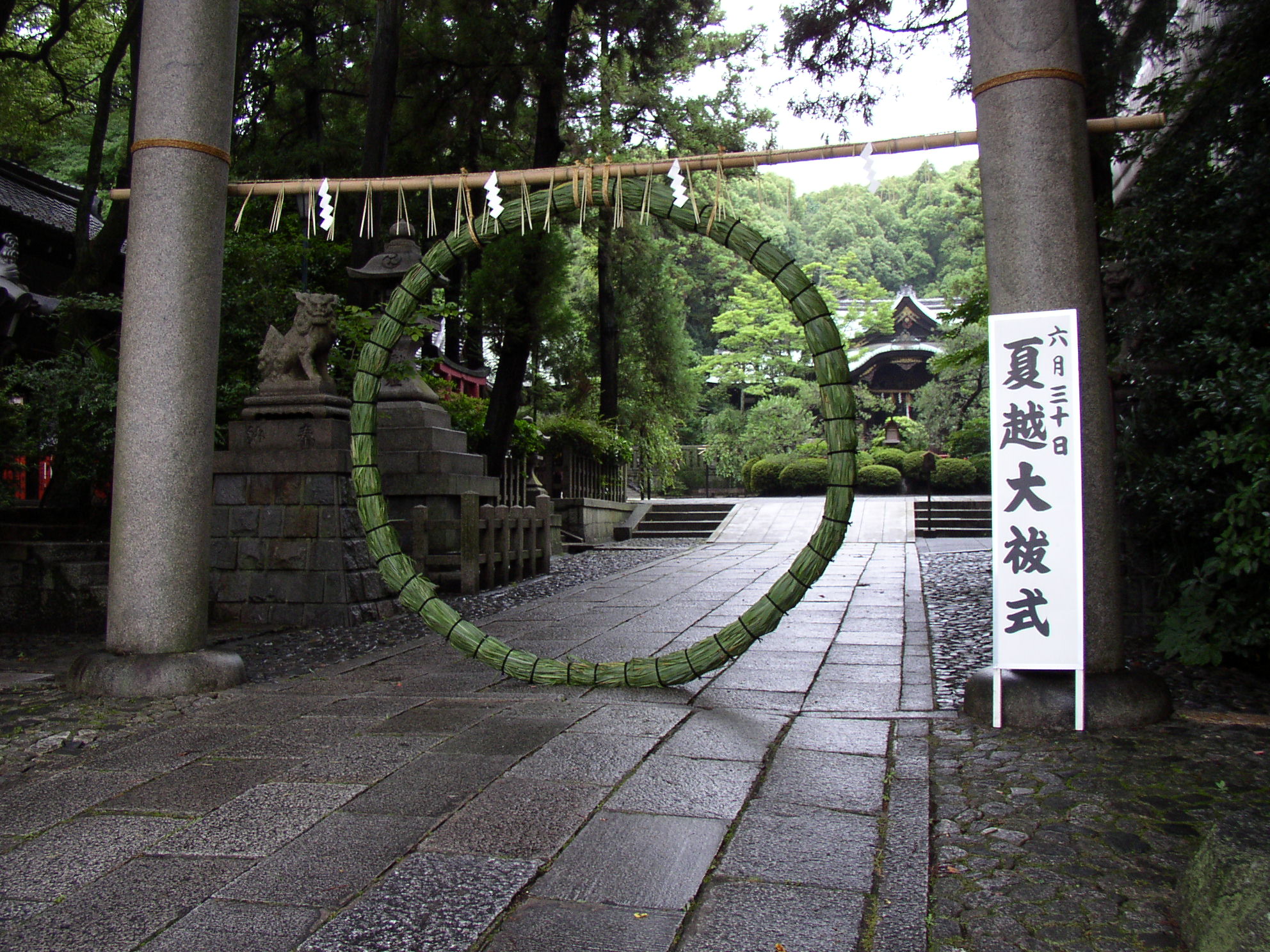
Okazaki Shrine official website (available in Japanese only)
Imakumano Shrine
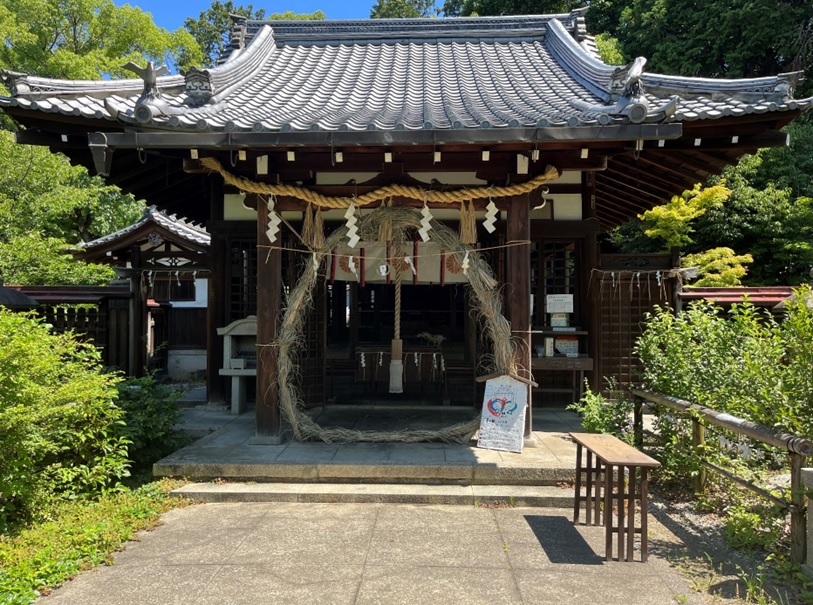
Imakumano Shrine official website (available in Japanese only)
Gokonomiya Shrine
The purification ritual that is usually held on the end of June is held here at the end of July, as it is set according to the lunar calendar. On the day of the ceremony, the priest will pass through the ring after which worshippers can follow suit.
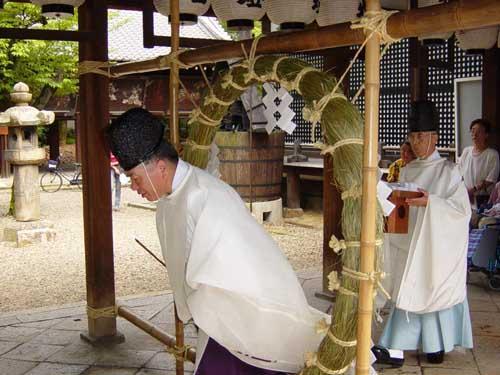
Gokonomiya Shrine official website (available in Japanese only)


